Should home inspectors walk through insulated attics to fully inspect the attic spaces? I say no. This topic was recently discussed in an online forum for home inspectors, and I was surprised by the number of chest-pounding home inspectors who are willing to trample through the insulation in an attic to inspect the furthest reaches. My goal is to leave houses the way that I found them, and leaving footprints throughout an attic does not align with that.
In most new-construction attics, there are enough trusses to climb on to make footprints unnecessary. The images below show some examples of how we do this.
That’s not to say I’ve never left footprints in attics; I’ll do it if I have a very compelling reason to. Once done, I do my best to ‘fluff up’ the insulation or kick it back over to help cover my tracks. It’s not perfect, but it’s not a big deal from an energy standpoint.
A cautionary tale
Besides the concern with trampling insulation, walking through an insulation-covered attic floor has the potential to cause damage to the home. I’ve come very close to stepping on recessed lights and bath fans many times, but I’ve been lucky enough to have never caused any damage. Knock on wood.
I haven’t always been lucky in attics, however. While inspecting an attic on a very nice Eden Prairie home many years ago with Jim, my inspection of the attic caused a pretty nasty plumbing leak. While walking around in a minimally-insulated attic, I accidentally stepped on a concealed plumbing vent. I thought I was stepping on framing, but the plumbing vent was hidden below the insulation. I felt the vent move a little but didn’t think anything of it. I pushed away some of the insulation to check for an attic bypass around the plumbing vent, and sure enough, there was no sealant around the vent, so I took a photo. See below.
Later on in the inspection, as Jim was inspecting one of the guest bathrooms, I heard him start yelling for me. He had filled the bathtub up with water, removed the access panel behind the tub to check for leaks at the overflow, then started draining the tub. As soon as the tub began to drain, water leaked out of the drain like crazy, saturating the floor and leaking into the garage ceiling below. He immediately stoppered the tub drain, but a lot of water had already leaked through.
Here’s a photo showing the drain below the tub:
You’re looking at soaked insulation and a soaked bath towel. Yes, that towel was there before the leak happened, which indicates that this has probably leaked in the past. We went down into the garage to survey the damage, and we took a video to document what happened. Here’s that:
Nasty, right? We did our best to clean up the mess in the garage and then got to looking more carefully at the bathtub drain. It turns out that the slip joint for the drain was completely disconnected, which is what caused the leak. I re-connected it and let the rest of the bathtub water drain, and it worked fine after that.
This home appeared to belong to empty-nesters, and our assumption was that there was a known leak at this tub. I mean, for goodness sakes, there was a towel below the drain! We assumed that the occupants simply no longer used this bathroom.
Turns out we were wrong. Later on in the day, the sellers were furious about the leak and said that they used this tub every day. I was skeptical, but I went over my photos from the house to try to figure out what could have happened. That’s when I remembered the plumbing vent. When I had felt the plumbing vent move, what I felt was the plumbing vent push down enough to disconnect the slip-joint at the bathtub. Ouch. That leak was my fault, and it was a very expensive mistake.
The lesson
When I look back on that mess, I ask myself what I need to do differently in the future to prevent something like that from ever happening again. The answer is pretty simple; don’t walk through attics when I can’t see what I’m stepping on.

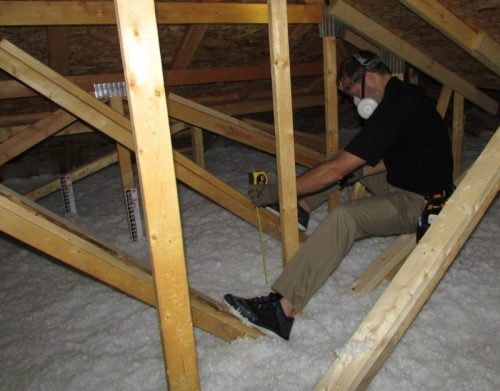
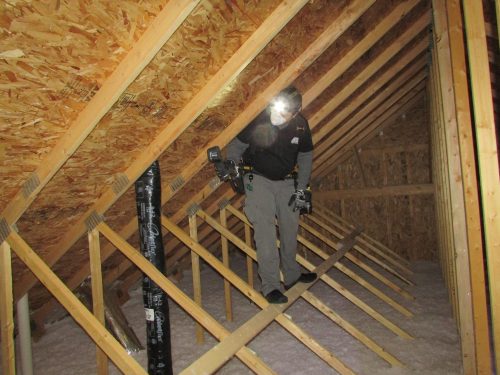
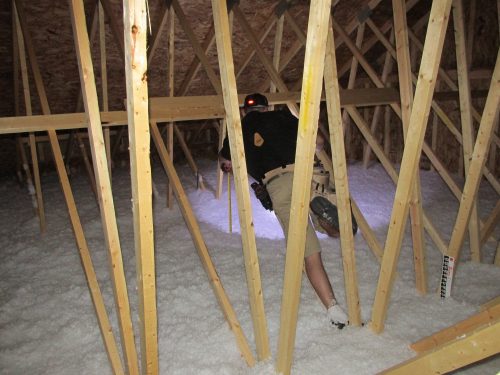
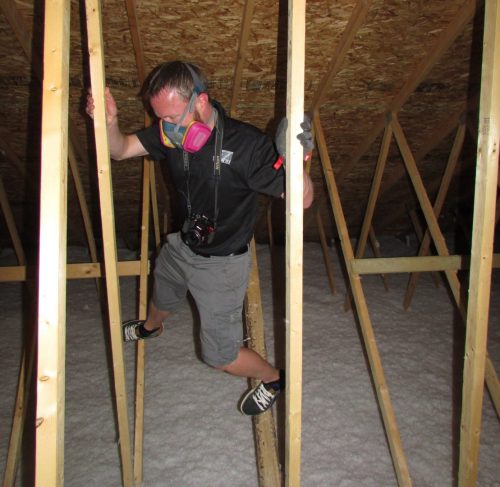
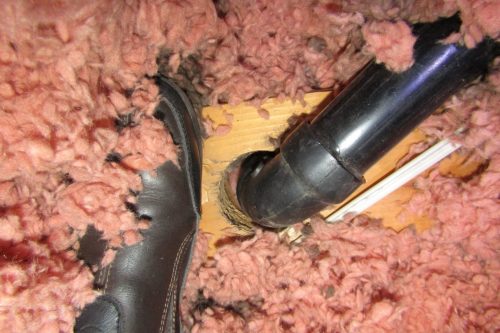
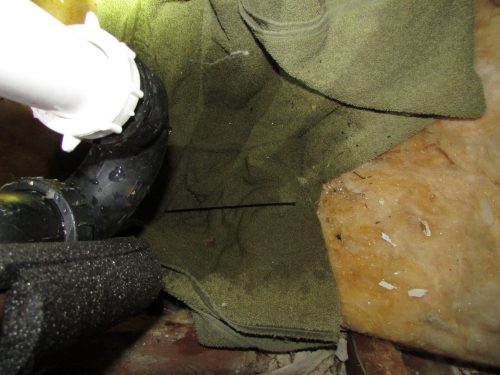

Paul Anderson
January 22, 2019, 7:33 pm
I look forward to every one of these real-life inspection episodes. Nothing I like better than a dull home inspection but that doesn’t make for very interesting blog topics.
Dean Young
February 3, 2019, 1:28 pm
Such a BIG liability. I’ve know several guys to cause damage and injury walking on framing, trusses etc.
Scott Knudson
February 9, 2019, 7:20 pm
Tread lightly on those trusses. They like to crack with too much weight.